| Umělec 2007/2 >> Art beyond Exhibition Duplus | Просмотр всех номеров | ||||||||||||
|
|||||||||||||
Art beyond Exhibition DuplusUmělec 2007/201.02.2007 Valeria Gonzales | manifesto | en cs de es |
|||||||||||||
|
In the art scene, the terms ‘new technologies’ and ‘new media’ function as synonyms. They are perfectly interchangeable. This brings with it a significant reduction: it implies that any technology, or any potential knowledge about technology, is reduced to its mere instrumental application as a means-to-an-end. In the world of the art exhibition, it is supposed that works associated with ‘new technologies’ or ‘new media’ deal with specific mediums such as photography, video, multimedia installations, net art, etc. In other words, new technologies are seen as new ways to produce the same thing: works of art. It goes without saying that every medium—from the Internet to oil painting—raises specific problems (technical, formal, semantic), and that the artist chooses his medium knowing it is not a neutral tool. Yet the surprising thing is not the sheer amount of changes, novelties, or the appearance of new media affecting the art system; the real surprise is—the constant novelties aside —the absolute stability of the functional structure of what we call ‘a work of art.’ Here, the distinction between modernity and post-modernity becomes rather blurred. For one thing, there hasn’t been a single contemporary work of art capable of countering or transcending “the real” as set out by Duchamp in the early decades of the 20th century. A signed urinal standing in an art gallery is not the same as one standing in the gallery’s bathroom. Though I can react with indignation (‘What a con-artist! This isn’t art!’), I accept the fundamental idea that defines a work of art. Behind the object there is someone (an absent subject) who wants to tell me something.1 What we accept as a work of art is an object that a) has a potentially universal ability to communicate, and b) is bound to a voluntary author subject. Thus, a work of art is an object mediating between two subjects who do not exist. Here, the notion of universality (the potential viewing public) and individualism (the author-subject) are one and the same: places where nobody exists. Let’s take another route and abandon the question of new technologies as a new means of producing works of art. Let’s instead ask ourselves what the conditions for creativity are in the general context of a technologized life. All things considered, there is nothing surprising or problematic about the fact that new technologies emerge as new mediums for producing works of art. After all, these technologies affect the entire production of all kinds of goods and merchandise, and influence the vast majority of productive work on a global scale. (Rather more mysterious or problematic nowadays is the persistence of painting in the art system). What do we mean by creativity? When Deleuze asks himself this question his answer is very simple.2 Creation is production, the emergence of a difference, of something that was not there before, of something that could not be simply deduced from what was there before. Certainly, this is easily understandable, but its taking form is anything but easy. Creation is extremely rare and hard to come by. “Having an idea is a kind of party,” says Deleuze. The vast majority of the activities that occupy people and things in the world are, from one point of view, mere reproductions; reproductions of specific conditions. The trouble is that in the real world both things occur together. Creation only appears as a bonus that exceeds the reproductive mechanisms structuring an action; a bonus that goes beyond the manifest goals of an action. Deleuze mentions Kurosawa’s Seven Samurai but we could find other examples. Examples found in popular struggles: when a group of piqueteros3 cuts off a road to demand food, bonds may (or may not) be formed there that go beyond the mechanisms of action and their direct objectives. The same is true of the Zapatistas: more than an army, they are a community. Examples can also be found in the world of art. Take AVL Ville, for example. The habitat that AVL designers have created for themselves goes beyond the conceptual ingenuity of creating a work of art in the form of a free state, of equating the work of art with the scale of a Nation-State; namely, the specific, workaday ways of life that they develop there. In all these cases there is, on the one hand, a systematic organization that could not be implemented without reproducing conditions and subsuming in these conditions any singularities. This is what entitles us to make use of such general categories as ‘picket’, ‘army’, ‘conceptual art work’. On the other hand, a difference sometimes emerges there and then: a singular event, a situation whose meaning is not communicable, something that resists being hybridized in a system, a temporality that cannot be spacialized,4a fragment that is not a part of an absent whole but rather a whole that is there in the part. Here the Deleuzian definition of creation is very similar to Duchamp’s.5 What Deleuze adds to Duchamp’s definition is that whenever this bonus we call art occurs there is an act of resistance. We are then left with reproduction versus creation, and power versus resistance. Power and resistance stem from the same material conditions, gain value from the same ‘things’. Deleuze, referring to El Greco, states: “With God anything can be done.”6 God is as much coaction as potential liberation. Our question about the condition of art in the era of biopolitical capitalism could be formulated in the same terms. When capital takes over life, when production is the production especially of language, of communication, or of living bodies (which basically means ‘new technologies’), we are also talking about new conditions of control and liberation.7 Power and resistance do stem from the same material conditions but the difference does not lie in the ‘media’. The difference lies in the absolute asymmetry between power and resistance. It is the same radical difference that separates something from nothing. What is power? It is the lack of potency. The paradox of capital attains its fullest expression in the biopolitical age. Capital lacks any productive capacity. Only the living forces of labour can actually produce anything. Only living beings. Capital is the accumulation of dead labour that organizes the living, but lacks any potency per se. In power, if we look closely, there is no one. Power seems to contain everything yet there is no one there. What is an artist? Someone capable of deconstructing existing conditions to produce his own being, to produce himself. Here practice and thought are one. This is not about the application of any given knowledge but about being able to think about one’s own praxis, to think about oneself. When we speak of post-modernity annulling time, we do not mean to say that chronological time, history, or the historical disciplines have been abolished. We mean that thought has been abolished.8 The capacity to re-appropriate time in one’s own thoughts, time that has been expropriated from us, is then the crux of aesthetic agency.9 But what else might this concept imply? Aesthetic agency goes beyond the inequity between an author-subject, an art work object and a public subject. First, the subject does not voluntarily produce an object for a viewing public, but is part of it and becomes him or herself in such practice. Specific aesthetic practice, then, is more about the process and the experience rather than the image form or resultant object. It may even be defined as a resistance to produce a product. It is therefore not participative art but participation art: a practice which does not attempt to get others to participate but rather to enable participants (let us in principle call them ‘artists’) to get involved in a specific socio-political experience. In an art work there is no message to be found by the public at large - rather there is an intensification of identification processes or subjective conformation. Lastly, artistic ‘techniques’ and ‘styles’ emerge from the situation, not from authorial projects. They are not established according to the value criteria of the contemporary art work. They are distinct from the application of specialized knowledge. They can even be voluntarily anachronistic or non-original. Aesthetic agency thus functions as a repeated process beyond a negative speculative relationship with power. So there is something deceptive in the adjective ‘new’ of ‘new media.’ This is not a matter of creating a ‘new’ work of art as distinct from previous ones. It is not about progress. That is the paradox of avant-gardes, for whom in reality success equals failure: a logical consequence of the obsolescence of styles, which far from vanishing, still centrally govern the dynamics of the art system. It is not about questioning the system to find a place in it, but about finding a place where creation is possible. It is not about negating the system but about affirming something. What difference might there be then between aesthetic agency as a re-appropriation of life, and the formal strategies of post-modern ‘appropriationist’ art? In our view the distinction is very similar to the one stressed in philosophy about the essences of beings. According to the classical tradition, the essence of a thing is like the outline of a figure (hence the relevance of Greek statuary here). In another philosophical tradition, which culminates with Spinoza, the limit of a thing is not the outline of its figure but the limit of its actions. Things are not essences or forms; they are potencies, sums of unencumbered potencies. They are living bodies, not ideas. Deleuze resurrects the plant world of the Stoics against the world of statuary. A seed can bring down a wall, so what sense is there in asking oneself about the outline of its figure? Where does a forest end? Is it the perimeter of the forest? “What shows that it isn’t an outline is the fact that we can’t even specify the precise moment at which it is no longer a forest. This is a dynamic limit as opposed to an outline limit. The thing has no limit other than the limit of its potency [puissance] or its action. The forest is not defined by its form, but by its potency: the potency to make more trees grow until it can no longer do so. The only question I have to ask of the forest is: what is your potency? In other words, how far will you go?”10 In the same way, we’d like to ask the question of art works: stop evaluating a figure’s outlines (be they visual or conceptual) in a predefined space (the art system), and start asking ourselves about the limits of action, about what the deployment of action nurtures, and about what it blows to smithereens.
(Footnotes) 1 Duplus was founded in 2002 by curators Valeria Gonzalez, Santiago Garcia Navarro, Santiago Garcia Aramburo and Teresa Riccardi, based in Buenos Aires, Argentina. 2. Gérard Wajcman, L´objet du siecle, París, editions Verdier, 1998. 3. A recent coinage on the word piquete or ‘picket’ for the informal organizations of the unemployed who took their protests onto the streets after Carlos Menem began to intensify neoliberal policies, which laid waste to the work and production systems in Argentina. 2 Deleuze, Gilles. Qu’est-ce que cèst l’acte de création? conference helded at the FEMIS Foundation, Paris, 1987. 5 Jameson, Fredric Postmodernism or, the Cultural Logic of Late Capitalism, Durham, Duke University Press, 1992 (1991). 6 “Art coefficient” is the difference existing between two copies. See Craig Adcock, Marcel Duchamp´s Notes from the Large Glass: An N-Dimensional Analysis, Ann Arbor, Michigan, UMI Research Press, 1983, pp. 48-55. See also Dalia Judovitz, Unpacking Duchamp, Berkeley, University of California Press, 1998. 7 Deleuze, Gilles. En medio de Spinoza, Buenos Aires: Cactus, 2003, p.20. 8 Hardt, Michael and Negri, Antonio, Empire, Harvard University Press, 2000. 9 Jameson, The Seeds of Time, Columbia Univerity Press, 1994. 10 Coined by Carlos Basualdo, this term was developed by Colectivo Situaciones and Duplus. See the foreword to the exhibition The Structure of Survival curated by Basualdo at the Venice Biennale 2003; ‘Agenciamiento estético y militante investigador’ [Æsthetic Agency & the Militant Investigation] (Duplus Archive); and ‘Agenciamiento estético. El caso del TPS’ [Æsthetic Agency & TPS] (also Duplus archive), respectively. 11 Deleuze, En medio de Spinoza, p.102 ff.
01.02.2007
Рекомендуемые статьи
|
|||||||||||||
|
04.02.2020 10:17
Letošní 50. ročník Art Basel přilákal celkem 93 000 návštěvníků a sběratelů z 80 zemí světa. 290 prémiových galerií představilo umělecká díla od počátku 20. století až po současnost. Hlavní sektor přehlídky, tradičně v prvním patře výstavního prostoru, představil 232 předních galerií z celého světa nabízející umění nejvyšší kvality. Veletrh ukázal vzestupný trend prodeje prostřednictvím galerií jak soukromým sbírkám, tak i institucím. Kromě hlavního veletrhu stály za návštěvu i ty přidružené: Volta, Liste a Photo Basel, k tomu doprovodné programy a výstavy v místních institucích, které kvalitou daleko přesahují hranice města tj. Kunsthalle Basel, Kunstmuseum, Tinguely muzeum nebo Fondation Beyeler.
|







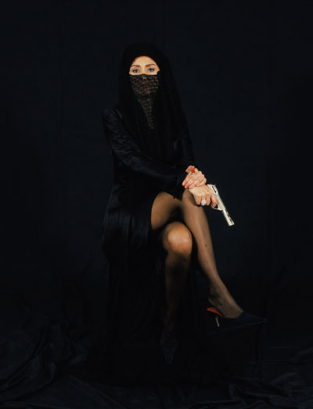





















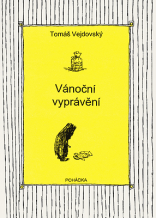
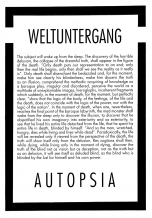
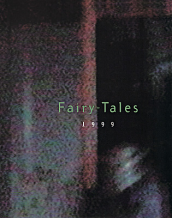
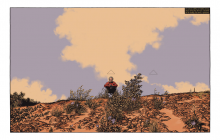


 We Are Rising National Gallery For You! Go to Kyjov by Krásná Lípa no.37.
We Are Rising National Gallery For You! Go to Kyjov by Krásná Lípa no.37.
Комментарии
Статья не была прокомментированаДобавить новый комментарий